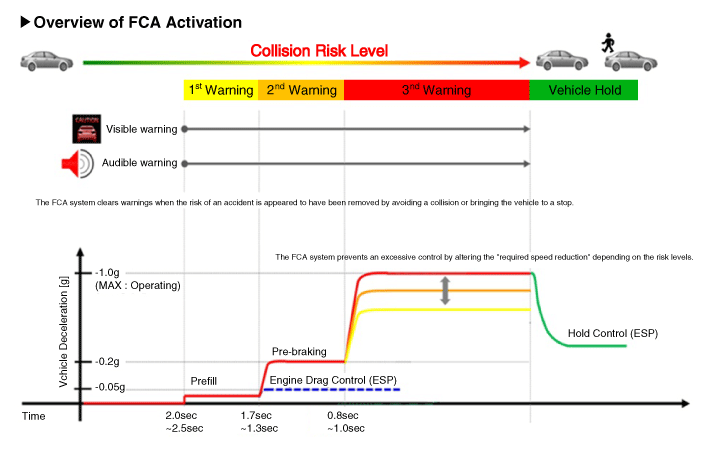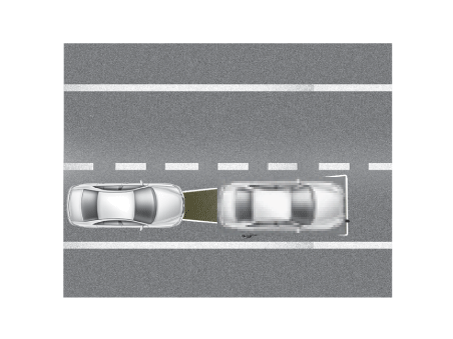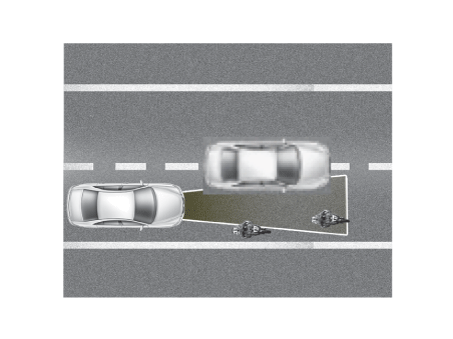Kia Forte: Brake System / Forward Collision-Avoidance Assist (FCA) System
Description and operation
| Description |
| – |
FCA system is designed to help avoid a potential collision or reduce its impact when drivers applies inadequate, delayed or no brakes at all to avoid a collision. |
| – |
The system detects the risk factors on the road by using the frontal impact sensor and warn the driver and activate the emergency brake to prevent collision or reduce collision speed. |
| 1. |
Deactivation condition
|
| 2. |
Limitations
|
| Operation |
| 1. |
Basic specification (front camera applied)
※ The time indicated will be changed according to vehicle speeds.
|
| 2. |
When the Smart Cruise Control is applied at the same time (front radar added)
The time indicated will be changed according to vehicle speeds.
|
Components and components location
| Components |
The following is the configuration of the FCA system.
[Basic specification (Front camera applied)]
| – |
Detection device (camera) that can recognize potential obstacles in the front. |
| – |
Human-Machine Interface (HMI) to warn driver or change settings. |
| – |
Braking system to automatically brake the car |
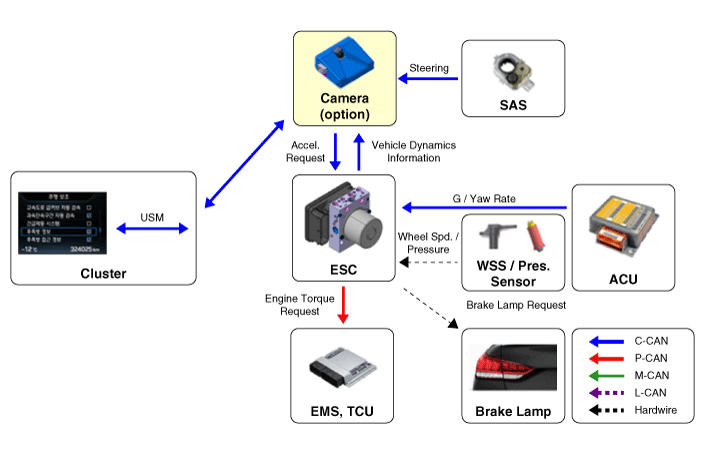
[When the Smart Cruise Control is applied at the same time (Front radar added)]
| – |
Detection device (radar and camera) that can recognize potential obstacles in the front. |
| – |
Human-Machine Interface (HMI) to warn driver or change settings. |
| – |
Braking system to automatically brake the car |
FCA, contrary to FCA (Smart Cruise Control), has to work on a stationary car so the system uses the Fusion Target system to combine radar with camera.
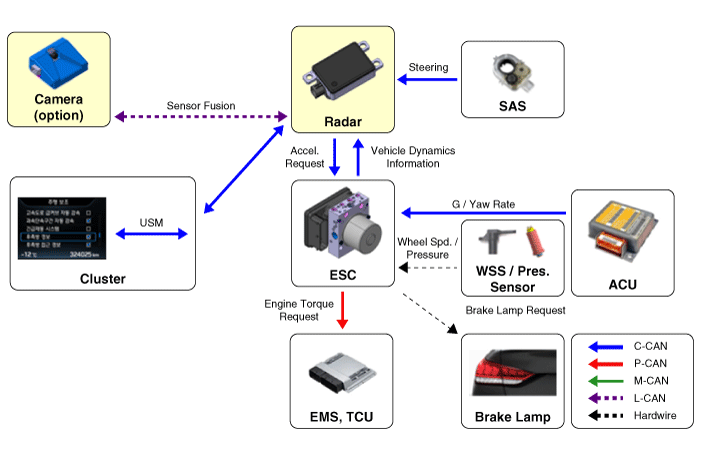
 Emergency Signal System
Emergency Signal System
Description and operation
Description
Introduction of quick brake warning system (ESS)
In case of quick brake by driver, the brake lamp or turn signal is blinked to
warn against the v ...
 FCA Radar
FCA Radar
Schematic diagrams
Circuit Diagram
Repair procedures
Removal
SCC & FCA Radar and Unit
1.
Remove the front bumper.
(Refer to Body (Interior and Ext ...
Other information:
Kia Forte 2019-2025 (BD) Service Manual: Rear Bumper beam Assembly
Components and components location Component Location [4 Door] 1. Rear bumper beam assembly [5 Door] 1. Rear bumper beam assembly Repair procedures Replacement &nb ...
Kia Forte 2019-2025 (BD) Service Manual: Rear Coil Spring
Repair procedures Removal and Installation 1. Remove the rear wheel and tire (A). Tightening torque : 107.9 - 127.5 N·m (11.0 - 13.0 kgf·m, 79.6 - 94.0 lb·ft) ...

